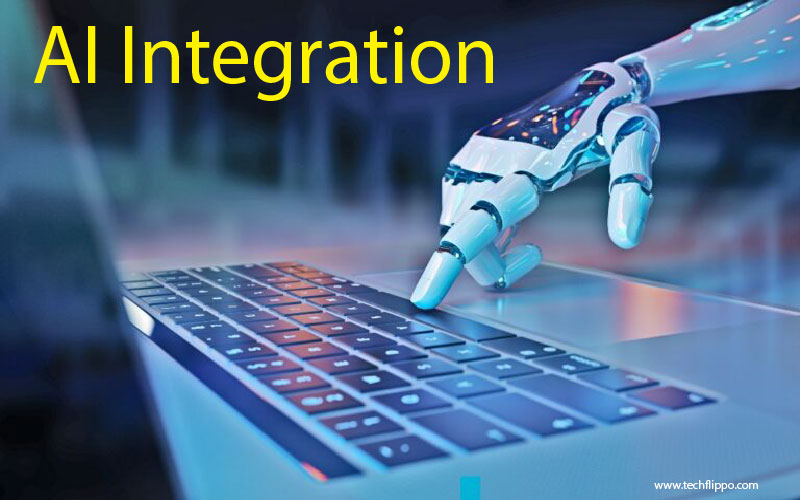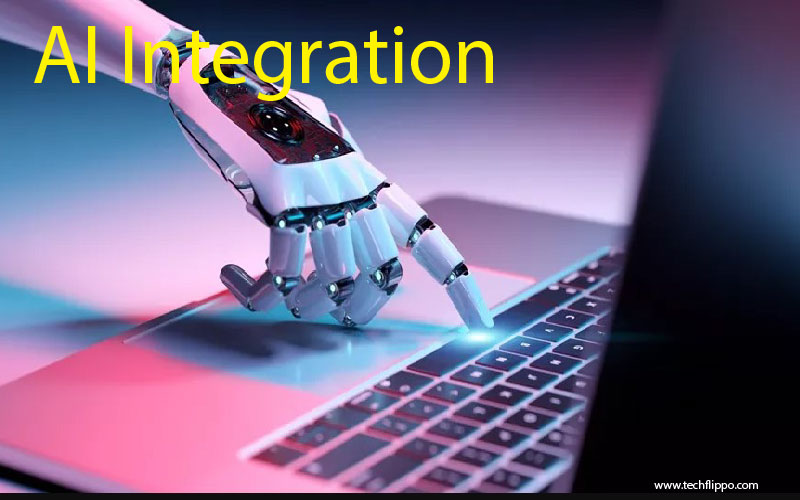The Essential Guide to Successful AI Integration in Your Organization
Artificial Intelligence (AI) is no longer a distant concept from science fiction. It has firmly established itself as a game-changer across various industries, transforming how organizations operate. If you’re considering AI integration, you’re not alone. Many businesses are keen to harness its potential to drive efficiency and innovation.
But what does successful AI integration look like? Understanding the nuances of this process can make all the difference between reaping rewards or facing hurdles. As more organizations rush to adopt AI technologies, knowing how to navigate this landscape becomes crucial for long-term success.
This guide aims to demystify the journey of integrating AI into your organization. From understanding its benefits and challenges to actionable steps for implementation and training, we’ll cover everything you need to know about effective AI integration. Get ready to unlock new possibilities that await your business in this exciting era of technology!

Benefits of AI Integration in Organizations
AI integration offers numerous benefits that can transform organizations. One of the most significant advantages is increased efficiency. By automating routine tasks, teams can focus on higher-value activities.
Enhanced decision-making is another key benefit. AI systems analyze data quickly, providing insights that humans might overlook. This leads to more informed choices and strategies.
Cost savings are also a driving factor for many businesses. AI reduces operational costs by streamlining processes and minimizing human error, which translates into better profit margins.
Moreover, customer experiences improve dramatically with AI tools. Personalized recommendations and chatbots create seamless interactions, enhancing satisfaction rates significantly.
Integrating AI fosters innovation within teams. With mundane tasks out of the way, employees have more time to explore creative solutions and drive growth initiatives forward. The possibilities are exciting as organizations embrace this technological shift.
Challenges of Implementing AI in Organizations
Implementing AI in organizations is not without its hurdles. One significant challenge is the lack of understanding among employees. Many feel intimidated by technology they don’t fully grasp.
Data privacy and security concerns also loom large. Organizations must navigate regulations while ensuring sensitive information remains protected. Any lapse can lead to serious consequences.
Integration with existing systems can be tricky too. Legacy systems often clash with new AI tools, leading to inefficiencies and frustration.
Moreover, there’s a cultural shift that needs addressing. Employees may resist changes brought on by AI due to fear of job displacement or uncertainty about their roles in an automated environment.
Securing adequate resources for training and development poses another obstacle. Without investment in people, even the best technology will struggle to deliver results effectively.
Steps to Successfully Integrate AI into Your Organization
Start by assessing your organization’s current processes. Identify areas where AI can offer the most impact. This could be in customer service, data analysis, or even operational efficiencies.
Next, set clear objectives for what you want to achieve with AI integration. Define measurable goals that align with your overall business strategy.
Gather a cross-functional team that includes IT specialists and end-users. Their insights will help tailor solutions to fit real-world needs effectively.
Choose the right technology partners who understand your vision and can provide support throughout the implementation process. Collaborate closely with them for seamless integration.
Pilot your AI initiatives on a small scale first. Monitor results closely and gather feedback from all stakeholders involved. Adjustments may be necessary before wider deployment.
Ensure robust data management practices are in place to support ongoing operations and future scalability of AI systems within your organization.
Best Practices for Training Employees on AI Usage
Training employees on AI usage is crucial for successful integration. Start with foundational knowledge. Ensure everyone understands basic concepts and terminology related to AI.
Incorporate hands-on training sessions. Real-life applications help bridge the gap between theory and practice. Use simulations or role-playing scenarios to build confidence.
Encourage a culture of continuous learning. Provide resources like online courses, webinars, or workshops focused on advancements in AI technology.
Foster collaboration among teams. Encourage sharing insights and experiences related to AI projects, fostering a sense of community.
Gather feedback regularly from employees about their training experience. This helps you refine your approach and tailor it to specific needs.
Promote an open mindset towards experimentation with AI tools. Allow room for trial and error, as this can lead to innovative solutions within your organization’s workflow.

Case Studies: Successful Examples of AI Integration
One standout example of successful AI integration is in the healthcare sector. A leading hospital implemented an AI-driven diagnostic tool that analyzes patient data to assist doctors in identifying diseases earlier. The result? Improved patient outcomes and reduced treatment costs.
In retail, a major clothing brand utilized AI algorithms for inventory management. By predicting fashion trends and customer preferences, they optimized stock levels, reducing waste significantly while boosting sales.
Another remarkable case comes from finance. An investment firm adopted machine learning models to analyze vast datasets for risk assessment. This led to more informed decision-making and enhanced profitability.
These examples demonstrate how organizations across various industries can harness the power of AI integration. Each case highlights innovative approaches tailored to specific challenges, showcasing the transformative potential of artificial intelligence in driving efficiency and growth.
The Future of AI in Organizations
The future of AI in organizations is brimming with potential. As technology advances, AI will become more intuitive and accessible. This shift will empower organizations to leverage data like never before.
Automation will evolve, taking on complex tasks that require decision-making capabilities. With machine learning algorithms improving continuously, businesses can expect enhanced predictive analytics for better strategic planning.
Collaboration between humans and AI will redefine workplace dynamics. Employees will focus on creative problem-solving while leaving repetitive tasks to machines.
Moreover, ethical considerations surrounding AI use are gaining traction. Organizations must prioritize responsible implementation to build trust among stakeholders.
As industries adapt, the integration of AI into everyday operations could lead to unprecedented efficiencies and innovations. The key lies in embracing change and fostering a culture that welcomes technological advancements.
Conclusion
AI integration is transforming the landscape of modern organizations. By embracing this technology, companies can unlock new possibilities and streamline operations. The benefits are clear: improved efficiency, enhanced decision-making, and the ability to offer innovative solutions.
However, successful AI integration comes with its own set of challenges. Organizations must navigate issues like data quality, employee training, and cultural shifts within the workplace. Addressing these hurdles head-on will pave the way for smoother implementation.
Following a structured approach helps in achieving effective AI integration. Establishing clear objectives, selecting appropriate technologies, and continuously monitoring progress are key steps that drive success. Ensuring your team is well-trained also plays a crucial role in maximizing AI’s potential.
Real-life case studies illustrate how various industries have successfully leveraged AI technology to improve their operations. These examples serve as inspiration for businesses considering similar paths toward innovation.
As we look forward to an increasingly digital future, the role of AI in organizations will only grow stronger. Embracing these changes now positions businesses at the forefront of their industries.
The journey into AI integration requires careful planning and execution but offers tremendous rewards for those willing to take that leap forward.